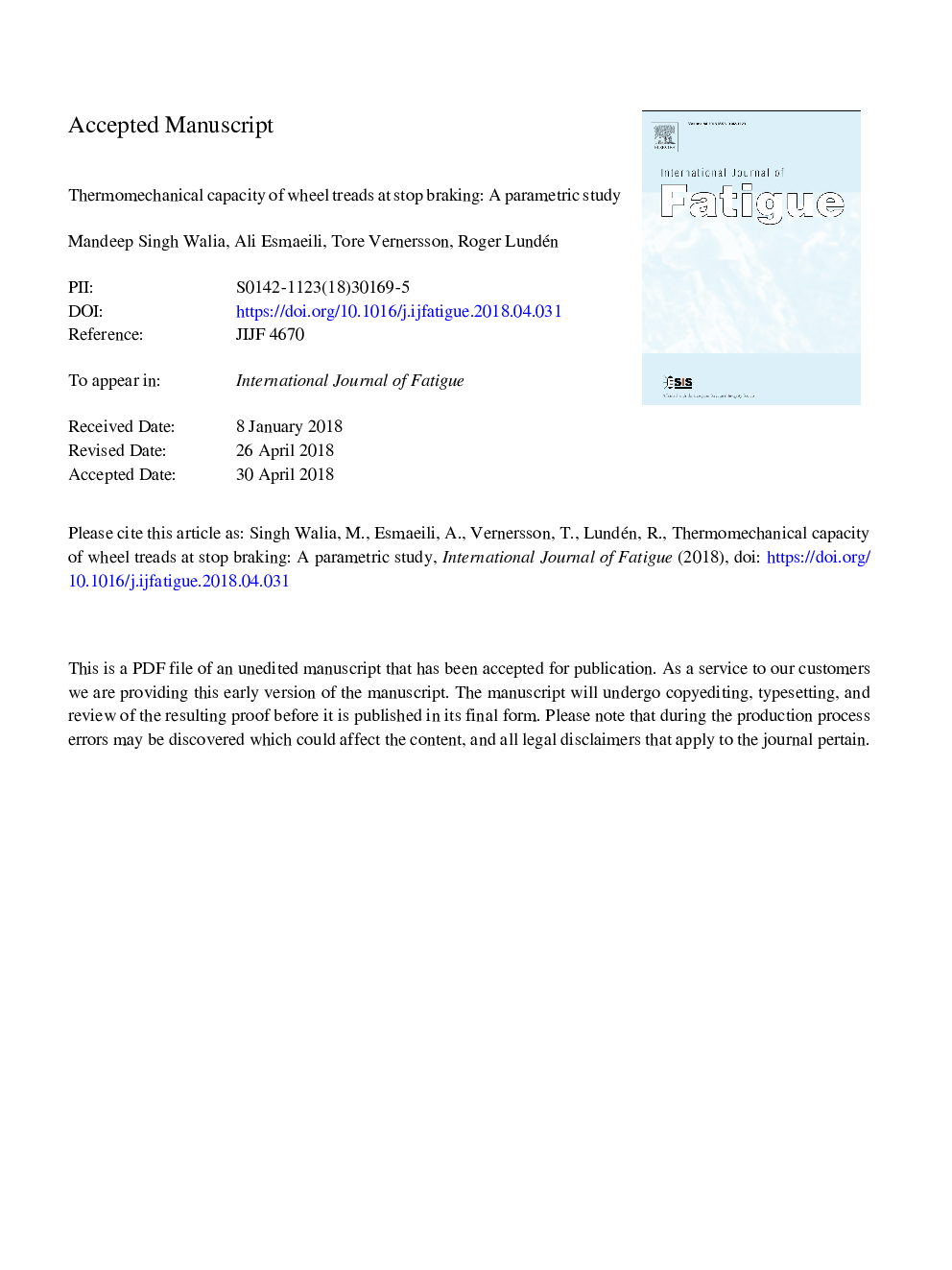| کد مقاله | کد نشریه | سال انتشار | مقاله انگلیسی | نسخه تمام متن |
|---|---|---|---|---|
| 7171420 | 1463709 | 2018 | 31 صفحه PDF | دانلود رایگان |
عنوان انگلیسی مقاله ISI
Thermomechanical capacity of wheel treads at stop braking: A parametric study
ترجمه فارسی عنوان
ظرفیت ترمومکانیکی چرخ دنده ها در توقف ترمز: یک مطالعه پارامتری
دانلود مقاله + سفارش ترجمه
دانلود مقاله ISI انگلیسی
رایگان برای ایرانیان
کلمات کلیدی
موضوعات مرتبط
مهندسی و علوم پایه
سایر رشته های مهندسی
مهندسی مکانیک
چکیده انگلیسی
During tread braking, the treads of railway wheels are subjected to a complex loading due to combined rolling contact and thermally induced stresses. In revenue traffic the running mode of the train varies and the operational parameters will influence the life of the wheels. To prevent excessive damage, it is therefore important to understand at which operational conditions wheel damage becomes unacceptable. The current study aims to find limits for tread braking with respect to the influence of thermal stresses on rolling contact fatigue (RCF) of the wheel tread when subjected to repeated stop braking. A parametric study, using 3D FE simulations and involving operational parameters such as axle load, maximum vehicle speed, deceleration, brake block material and initial wheel temperature, is carried out for a new wheel with an S-shaped web. Additional analyses investigate impact from wheel geometry by studying a wheel with a straight web and a wheel with a thin (worn) rim. The effects of simultaneous thermal loading from wheel-block frictional contact during braking and mechanical loading, due to the traversing wheel-rail rolling contact, are studied in an uncoupled thermomechanical analysis. In the wheel-rail contact simulations, frictional rolling contact stress distributions induced by braking are accounted for. Interfacial shear stresses and partial slip are also included in the model. A temperature-dependent elastoplastic model is utilised to characterise changes in material behaviour during braking. In the vicinity of the wheel tread, damage evolutions for the studied brake load cases are evaluated. The results show that high tread temperatures, in particular temperatures above 450â¯Â°C, have a strong detrimental influence on the RCF formation and, hence, also on the thermomechanical capacity of the wheel. On the other hand, it is found that for braking temperatures between 300â¯Â°C and 375â¯Â°C, the fatigue resistance is increased due to strain hardening effects. In addition, the parametric study points towards actual braking load cases that can give such temperatures in terms of initial speeds, axle loads, etcetera. Specifically, the study shows that the train axle load, that controls the normal wheel-rail contact force, has a substantial impact on the life of the wheel treads. Wheels having straight webs and S-shaped wheel web exhibit the same fatigue life of their treads, whereas a reduction in wheel rim thickness promotes ratchetting due to increased flexural stresses from the mechanical wheel-rail contact loading.
ناشر
Database: Elsevier - ScienceDirect (ساینس دایرکت)
Journal: International Journal of Fatigue - Volume 113, August 2018, Pages 407-415
Journal: International Journal of Fatigue - Volume 113, August 2018, Pages 407-415
نویسندگان
Mandeep Singh Walia, Ali Esmaeili, Tore Vernersson, Roger Lundén,
